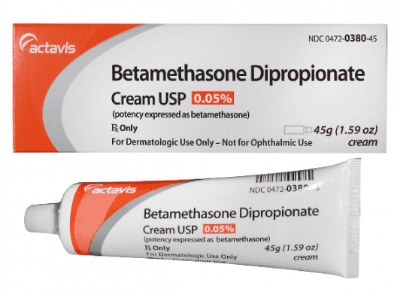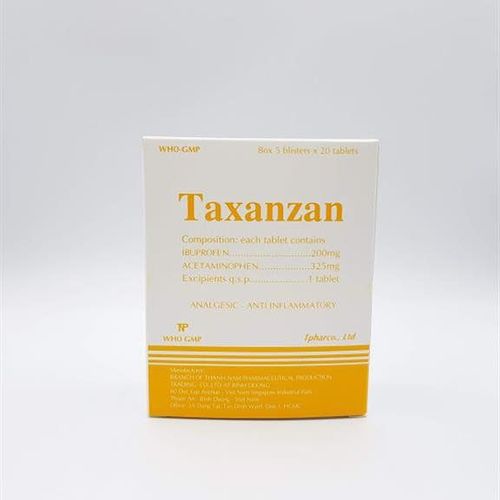This is an automatically translated article.
Cortisone drugs often relieve symptoms quickly, so now the abuse of the drug tends to increase, causing many serious side effects. Therefore, you should not arbitrarily use Cortisone, only use it when prescribed by your doctor.
1. What is Cortisone?
Cortisone (Corticoid, Glucocorticoid) is a hormone that has anti-inflammatory effects, reducing the body's natural defense response and symptoms such as swelling, arthritis, allergic-type reactions. Currently on the market there are many brand-name drugs Cortisone with the ingredients are: Prednisolone, hydrocortisone, methyl solon, dexamethasone, betamethasone.... and are produced in many different dosage forms such as:
Inflammatory form for use For drinking; Intramuscular, intravenous or direct injection into the joint; Inhalation form, nasal spray, solution for use with nebulizers; Ointment, cream, gel, ... used topically as topical application, eye drops, nose, ears.
2. Indications for taking Cortisone
Cortisone is a hormone that has anti-inflammatory effects, reducing the body's natural defense response and symptoms such as swelling, arthritis, allergic-type reactions. Therefore, the drug Cortisone is often indicated for use in specific cases as follows:Rheumatoid arthritis and other autoimmune diseases such as Crohn's, lupus erythematosus,...; Airway diseases such as: bronchial asthma, chronic obstructive pulmonary disease; Skin diseases such as: Psoriasis, allergic contact dermatitis, insect bites, eczema,...; Gout ; Bursitis, carpal tunnel syndrome; Eye diseases; Used to replace adrenal hormones in cases where the body does not produce enough of these hormones; Patients with severe allergic reactions; Cortisone drugs can be used with other drugs to prevent transplant rejection in patients who have recently undergone liver and kidney transplantation,...; In addition, the drug Cortisone is also indicated in some other cases when prescribed by a doctor.
3. Dosage and how to use Cortisone
With Cortisone in oral tablet form: You should take the drug with food or milk to reduce irritation and discomfort in the stomach. Cortisone tablets are taken as prescribed by the doctor. You can refer to the dose as follows:
Dosage for adults with adrenal insufficiency: 25-300mg/day divided into 1-2 times/day; Dosage for adults with idiopathic thrombocytopenic purpura: 25-300mg/day divided into 1-2 times/day; Dosage for adults with hemolytic anemia: 25-300mg/day divided into 1-2 times/day; Dosage for adults with erythrocytopenia: 25-300mg/day divided into 1-2 times/day; Dosage for adults with Loeffler syndrome: 25-300mg/day divided into 1-2 times/day; Dosage for adults with sarcoid disease: 25-300mg/day divided into 1-2 times/day; Dosage for adults with beryllium poisoning: 25-300mg/day divided into 1-2 times/day; Dosage for adults with cancer of the lymphatic system: 25-300mg/day divided into 1-2 times/day; Dosage for adults with nephrotic syndrome: 25-300mg/day divided into 1-2 times/day; Dosage for adults with eye diseases such as uveitis, iritis, keratitis: 25-300mg/day divided into 1-2 times/day; Dosage for adults with joint diseases and autoimmune diseases such as rheumatoid arthritis, lupus erythematosus: 25-300mg/day divided into 1-2 times/day; Dosage of Cortisone for children: Use dose of Cortisone 05-0.75mg/kg body weight/day divided into 2 times/day. Note: The concentration of glucocorticoid hormone is highest in the morning and gradually decreases towards the end of the day, so do not take Cortisone drugs in the evening. Do not stop taking it suddenly if you have been taking Cortisone for a long time.
With Cortisone cream, gel, ointment applied to the skin: Only apply a thin layer 2-3 times a day. Do not apply Cortisone in a thick layer, on a large area, in closed bandages, eyelids, breast-feeding women, broken skin or open wounds; With Cortisone in the form of inhalation, spray, solution for use with a nebulizer: Use as directed by your doctor. With this form, patients often experience less serious side effects, which can be prevented by performing the correct spray technique and rinsing the mouth after using the drug; With Cortisone in the form of direct injection into the joint: Cortisone should not be injected more than 6 weeks/time and no more than 3-4 times/year. Careful injection in young patients because the joints are healthy, the drug will affect the joints more. With Cortisone in the form of intramuscular injection:
Dosage for adults with adrenal insufficiency: 25-300mg/day, intramuscularly, divided into 1-2 times/day; Dosage for adults with idiopathic thrombocytopenic purpura: 25-300mg/day, intramuscularly, divided into 1-2 times/day; Dosage for adults with hemolytic anemia: 25-300mg/day, intramuscularly, divided into 1-2 times/day; Dosage for adults with erythrocytopenia: 25-300mg/day, intramuscularly, divided into 1-2 times/day; Dosage for adults with Loeffler syndrome: 25-300mg/day, intramuscularly, divided into 1-2 times/day. Dosage for adults with sarcoid: 25-300mg/day, intramuscularly, divided into 1-2 times/day.; Dosage for adults with beryllium poisoning: 25-300mg/day, intramuscularly, divided into 1-2 times/day; Dosage for adults with cancer of the lymphatic system: 25-300mg/day, intramuscularly, divided into 1-2 times/day; Dosage for adults with nephrotic syndrome: 25-300mg/day, intramuscularly, divided into 1-2 times/day; Dosage for adults with eye diseases such as uveitis, iritis, keratitis: 25-300mg/day, intramuscularly, divided into 1-2 times/day; Dosage for adults with joint diseases and autoimmune diseases such as rheumatoid arthritis, lupus erythematosus: 25-300mg/day, intramuscularly, divided into 1-2 times/day.
4. Cortisone side effects
The drug cortisone can cause many unwanted effects for users. The specific side effects of cortisone drugs are as follows :
Stomach - duodenal ulcers ; Superficial vasodilation; Cushing's syndrome; Stress, insomnia, dizziness; Increased appetite, increased sweating, muscle atrophy; Rash, hives, difficulty breathing, palpitations, palpitations, anaphylaxis; Osteoporosis; Skin atrophy, hirsutism, skin pigmentation changes, menstrual cycle disturbances; Pain, weakness, convulsions. Therefore, in the process of using Cortison e, if you experience any unwanted effects of the drug, immediately notify your doctor and go to the nearest medical facility for timely examination.
5. Be careful when using Cortisone
Currently there is not enough evidence to determine the harmful effects that Cortisone can cause to pregnant and breastfeeding women. Therefore, caution should be exercised when using Cortisone for women who are pregnant, planning to become pregnant and breast-feeding. Should only be used when prescribed by a doctor and the benefits outweigh the risks; The patient is preparing to receive a live virus vaccine; Patients with allergies to drugs, foods or other substances, patients with a history of peptic ulcer.
6. Drug interactions
Cortisone can interact with the following drugs including:
Human C1-esterase inhibitor drugs: Increases the risk or severity of blood clots; Clarithromycin antibiotic ; Antifungal drugs such as Ketoconazole, a live vaccine; Birth control pills belonging to the steroid group; Anticoagulants increase the risk of side effects from Cortisone Deferasirox: When Cortisone is used in combination with Deferasirox, there is an increased risk or severity of peptic ulcers; Amphotericin B: Increases the risk of hypokalemia; Norepinephrine drugs: Increases the risk of hypokalemia; Barbiturates such as Phenobarbital; Hydantoins may decrease the effectiveness of Cortisone. Store Cortisone at room temperature, in a cool, dry place, away from light and reach of children.
Cortisone often relieves symptoms quickly, so now the abuse of the drug tends to increase, causing many serious side effects. Therefore, you should not arbitrarily use Cortisone drugs arbitrarily, only use when prescribed by your doctor.
Please dial HOTLINE for more information or register for an appointment HERE. Download MyVinmec app to make appointments faster and to manage your bookings easily.













